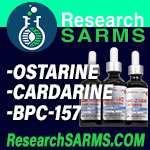Cinnamon improves glucose and lipids of people with type 2 diabetes.
Khan A, Safdar M, Ali Khan MM, Khattak KN, Anderson RA.
Department of Human Nutrition, NWFP Agricultural University, Peshawar, Pakistan.
OBJECTIVE: The objective of this study was to determine whether cinnamon improves blood glucose, triglyceride, total cholesterol, HDL cholesterol, and LDL cholesterol levels in people with type 2 diabetes. RESEARCH DESIGN AND METHODS: A total of 60 people with type 2 diabetes, 30 men and 30 women aged 52.2 +/- 6.32 years, were divided randomly into six groups. Groups 1, 2, and 3 consumed 1, 3, or 6 g of cinnamon daily, respectively, and groups 4, 5, and 6 were given placebo capsules corresponding to the number of capsules consumed for the three levels of cinnamon. The cinnamon was consumed for 40 days followed by a 20-day washout period. RESULTS: After 40 days, all three levels of cinnamon reduced the mean fasting serum glucose (18-29%), triglyceride (23-30%), LDL cholesterol (7-27%), and total cholesterol (12-26%) levels; no significant changes were noted in the placebo groups. Changes in HDL cholesterol were not significant. CONCLUSIONS: The results of this study demonstrate that intake of 1, 3, or 6 g of cinnamon per day reduces serum glucose, triglyceride, LDL cholesterol, and total cholesterol in people with type 2 diabetes and suggest that the inclusion of cinnamon in the diet of people with type 2 diabetes will reduce risk factors associated with diabetes and cardiovascular diseases.
PMID: 14633804 [PubMed - in process]
***********************************
The search for a natural way to keep blood sugar levels normal began more than a decade ago when ARS chemist Richard A. Anderson and co-workers at the Beltsville (Maryland) Human Nutrition Research Center assayed plants and spices used in folk medicine. They found that a few spices—especially cinnamon—made fat cells much more responsive to insulin, the hormone that regulates sugar metabolism and thus controls the level of glucose in the blood.
With help from Walter F. Schmidt in ARS's Nuclear Magnetic Resonance Laboratory at Beltsville, the researchers identified the compounds in cinnamon responsible for its activity. The patent application names Anderson, his co-workers C. Leigh Broadhurst and Marilyn M. Polansky, and Schmidt as the inventors.
Cinnamon is among the world's most frequently consumed spices and is relatively inexpensive. Anderson and colleagues found that its most active compound—methylhydroxy chalcone polymer (MHCP)—increased glucose metabolism roughly 20-fold in a test tube assay of fat cells.
The researchers tested 50 some plant extracts and found that none of them came close to MHCP's level of affecting glucose metabolism—a process in which cells convert glucose to energy. If in future research MHCP proves to do the same in people, it might provide a natural remedy against diabetes.
What's more, MHCP prevented the formation of damaging oxygen radicals in a blood platelet assay.
"That could be an important side benefit," notes Anderson. "Other studies have shown that antioxidant supplements can reduce or slow the progression of various complications of diabetes."
MHCP is the first chalcone, a type of polyphenol or flavonoid, reported in cinnamon. MHCP and other active compounds are water soluble and are not found in the spice oils sold as food additives.
Anderson pointed out that the water extract reduced blood pressure in hypertensive rats even before it increased insulin sensitivity. And compounds in a water extract are less likely to be toxic in large doses than those in an oil extract, he says.—By Judy McBride, Agricultural Research Service Information Staff.
This research is part of Human Nutrition, an ARS National Program (#107) described on the World Wide Web at
http://www.nps.ars.usda.gov/programs/appvs.htm.
Richard A. Anderson is at the USDA-ARS Nutrient Requirements and Functions Laboratory, Bldg. 307, Room 224, 10300 Baltimore Ave., Beltsville, MD 20705-2350; phone (301) 504-8091, fax (301) 504-9062.
"Cinnamon Extracts Boost Insulin Sensitivity" was published in the July 2000 issue of Agricultural Research magazine.



 Please Scroll Down to See Forums Below
Please Scroll Down to See Forums Below 













